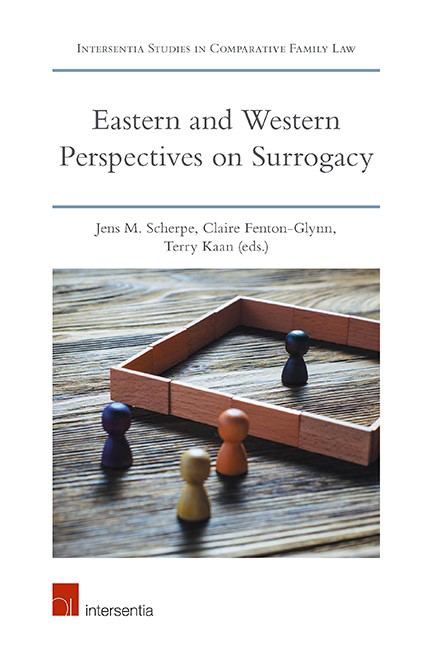Book contents
- Frontmatter
- Preface and Acknowledgements
- Contents
- List of Contributors
- Introduction
- Questionnaire
- PART I WESTERN PERSPECTIVES
- THE PROHIBITIVE APPROACH
- France
- Germany
- Germany: A Judicial Perspective
- Spain
- THE TOLERANT APPROACH
- THE REGULATORY APPROACH
- THE FREE MARKET APPROACH
- THE INFLUENCE OF INTERNATIONAL COURTS
- PART II EASTERN PERSPECTIVES
- THE PROHIBITIVE APPROACH
- A TOLERANT APPROACH?
- REGULATION THROUGH PROFESSIONAL MEDICAL BODIES
- FROM FREE MARKET TO REGULATION
- PART III COMPARATIVE PERSPECTIVES ON SURROGACY
- Index
- About the Editors
Spain
from THE PROHIBITIVE APPROACH
Published online by Cambridge University Press: 26 June 2019
- Frontmatter
- Preface and Acknowledgements
- Contents
- List of Contributors
- Introduction
- Questionnaire
- PART I WESTERN PERSPECTIVES
- THE PROHIBITIVE APPROACH
- France
- Germany
- Germany: A Judicial Perspective
- Spain
- THE TOLERANT APPROACH
- THE REGULATORY APPROACH
- THE FREE MARKET APPROACH
- THE INFLUENCE OF INTERNATIONAL COURTS
- PART II EASTERN PERSPECTIVES
- THE PROHIBITIVE APPROACH
- A TOLERANT APPROACH?
- REGULATION THROUGH PROFESSIONAL MEDICAL BODIES
- FROM FREE MARKET TO REGULATION
- PART III COMPARATIVE PERSPECTIVES ON SURROGACY
- Index
- About the Editors
Summary
GENERAL LEGAL FRAMEWORK
The first assisted reproductive technologies (‘ART’) regulation in Spain was Act 35/1988 of 22 November (BOE no. 282, 24 November 1988). This was followed some years later by Act 14/2006 of 26 May on assisted human reproductive technologies (BOE no. 126, 27 May 2006), which persisted in denying surrogacy arrangements any legal effects. Article 10.1 declared commercial or altruistic gestational surrogacy arrangements ‘fully null and void’, and thus these arrangements have typically been considered to be contracts with unlawful purpose (Arts 1271 and 1275 of the Spanish Civil Code). The main consequence of the nullity is that any child's legal mother is the woman who gave birth to it (Art. 10.2 of Act 14/2006), in accordance with the Roman law principle mater semper certa est.
Spain has become one of the top ‘fertility tourism’ destinations for couples and single women from other European countries. Factors such as permission to use third-party gametes; ‘compensation’ policies fostering gamete surplus; donor anonymity; non-exclusion of unmarried and lesbian couples; and – in the private sector – lower costs and shorter waiting lists compared to other Member States which also have liberal ART regulations all go some way to explaining this phenomenon. However, Spanish citizens themselves need to leave Spain and visit other legal systems when matters of surrogacy are concerned. Popular destinations so far have been – in this order – the United States (US), Ukraine, India, Mexico and Thailand. Although providing official data on a reality which takes place outside the control of the law is extremely difficult, there is some evidence which leads to the conclusion that cross-border surrogacy is an ever-increasing phenomenon in Spain, often encouraged by private agencies and intermediaries. It is estimated that around 1,000 children with Spanish commissioning parents were allegedly gestated in this way and born in the US in 2003. According to data from the Spanish Consulate in Los Angeles, the birth rate among Spanish nationals resident in this consular territory in 2008 was 50.01 per 1,000 residents, which is five times higher than that among Spanish nationals residing in Spain that same year (9.8 per 1,000). This rate can only be explained because the Consulate has allowed for the registration of sons and daughters of non-residing couples of different sex.
- Type
- Chapter
- Information
- Eastern and Western Perspectives on Surrogacy , pp. 59 - 82Publisher: IntersentiaPrint publication year: 2019

